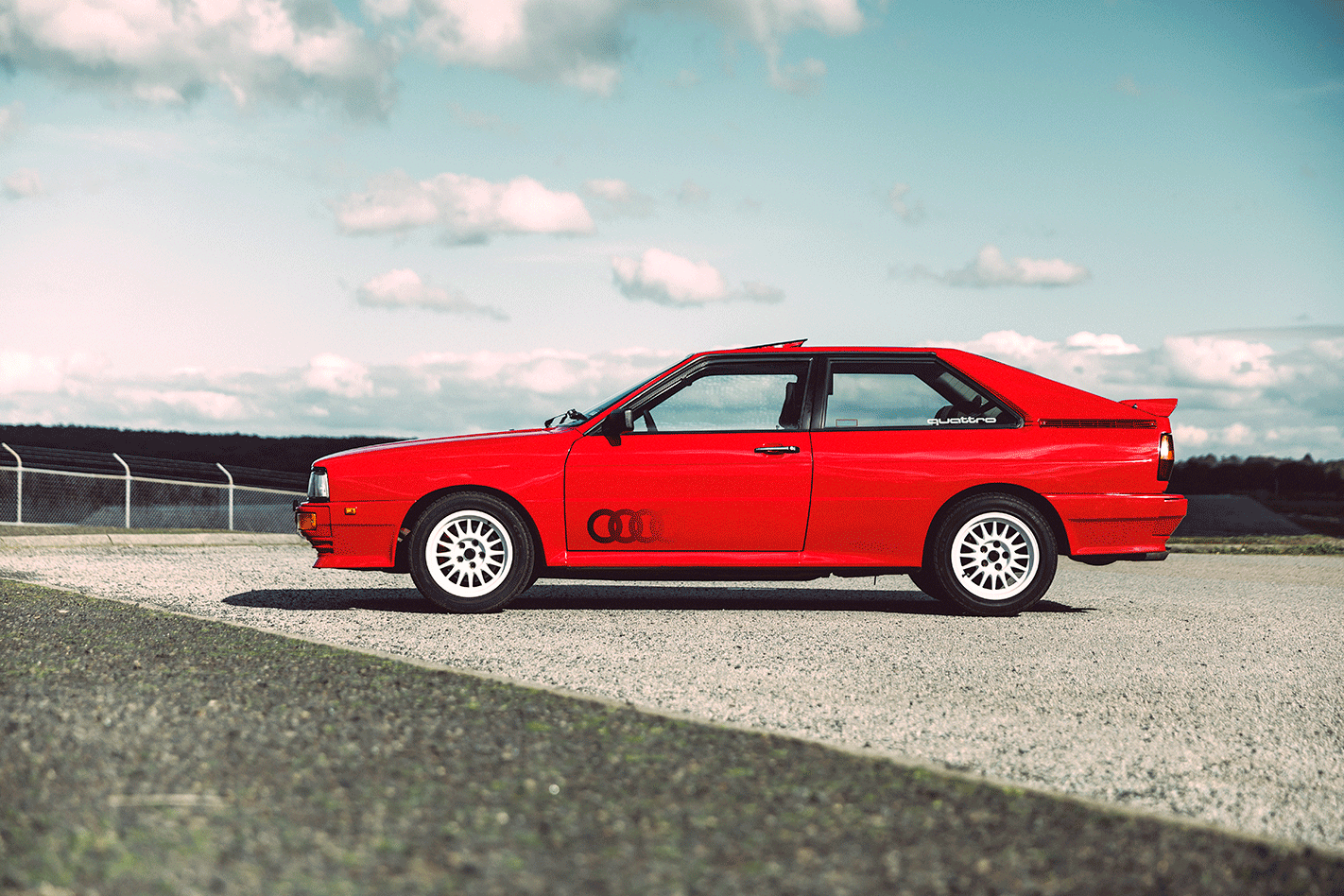SHOULD YOU need a history lesson on the development of the Audi Quattro, look no further than the September ’19 issue of Wheels magazine. Peter Robinson met Jorg Bensinger, the engineer who was the father of the Quattro, drove both road and rally versions at the original Turracher Hohe press launch venue and revealed the backstory behind this revolutionary vehicle.
It’s genuinely hard to overstate the Quattro’s impact. Pedants may well point out that Jensen had already built an all-wheel-drive sporting car with its 1966 FF. Better informed pedants could also point to road cars like the AMC Eagle and the Subaru Leone predating the 1980 Quattro but, to do so is to miss the point. The Golf GTI wasn’t the first hot hatch and the Toyota Prius was far from the first petrol/electric hybrid, but both captured the imagination and transformed the automotive milieu in much the same way the Quattro did.
As much as the Quattro all-wheel-drive concept transformed world rallying, the actual car wasn’t anything like as successful as its reputation suggests, claiming the manufacturer crown just twice, in 1982 and 1984. So, statistically, it’s as successful as a Citroen DS3 and less so than a Fiat 131 Abarth, themselves hardly icons of world rallying. It was what the Quattro stood for, as much as what it was, that cemented its status.
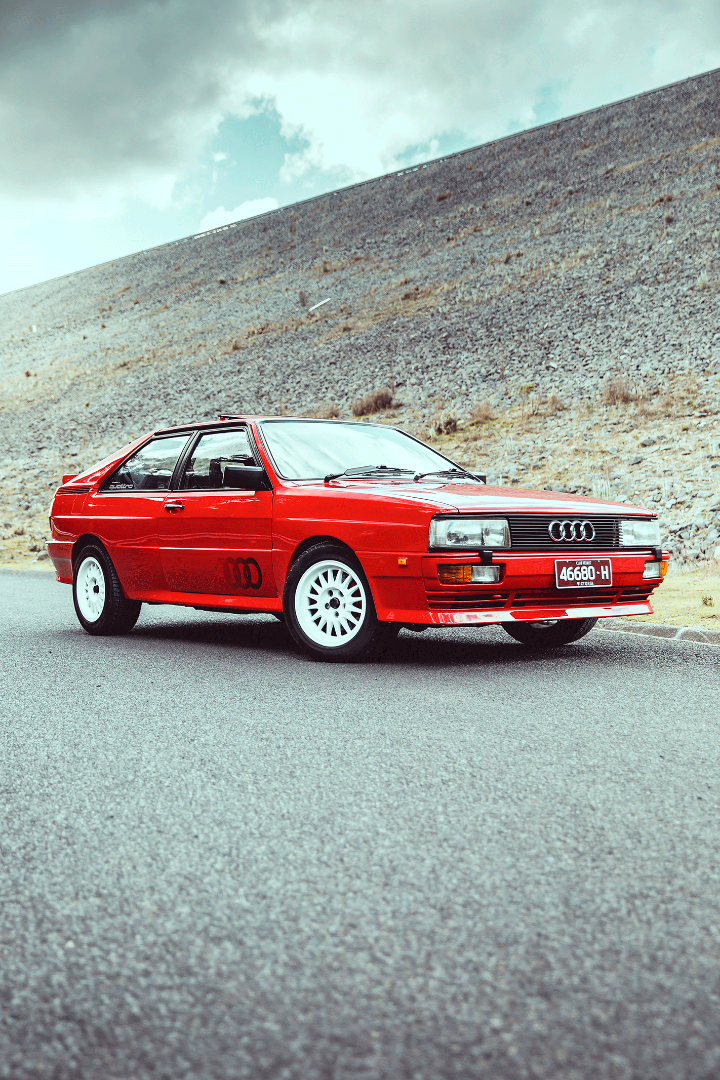
It marked a new era of professionalism in world rallying, of bigger budgets and a steelier focus. The sport moved into an era of hugely funded works teams with model succession plans. Group B went supernova and manufacturers were left carrying the can, but it was already apparent by mid-1984 that Audi’s superiority had a distinct expiry date. Whereas the Quattro was always a modified front-engined road car, the mid-engined, spaceframe Peugeot 205 T16 was smaller, nimbler and quicker, and formed part of an all-wheel drive mid-engined assault that included purpose-built racers like the Ford RS200, the Rover Metro 6R4 and the Lancia Delta S4. Audi’s response was the secret Sport Quattro RS002, a mid-engined coupe that was designed for the forthcoming Group S regulations, but which never saw the light of day after Group B was cancelled due to a series of high-profile accidents in the 1986 season.
While the rally Quattro carved an indelible mark on the sport, the roadgoing versions of the ur-Quattro were similarly pivotal. A quick primer on the models available first. The five-cylinder road cars split neatly into three families. The original 147kW 2144cc ten-valve models are referred to as the WR cars (1980-1987), with the 147kW 2226 cc 10v with the Torsen centre diff being the MB engine (1987-1990), and the final 162kW 20v Torsen-equipped cars known to aficionados as either the RR or simply the 20v (1989-1991). The MB and RR models are a good deal more civilised on road than the somewhat crude WR.
The US market initially got a detuned version of the WR. The so-called WX engine made 119kW and was also exported to Swiss and Japanese markets that required additional emissions controls. In addition to these volume models, Audi also produced 224 examples of the short-wheelbase homologation special Sport Quattro. This made 224kW in roadgoing trim from a lower capacity 2133cc all-aluminium unit with four valves per cylinder, Bosch LH Jetronic fuel injection and a KKK K27 turbo. As well as having 317mm chopped out of the wheelbase to improve manoeuvrability, the Sport Quattro also received the more upright front glasshouse from the Audi 80 in order to improve visibility after Röhrl, Mikkola and Blomqvist had all complained of dash reflections in the raked Quattro screen.
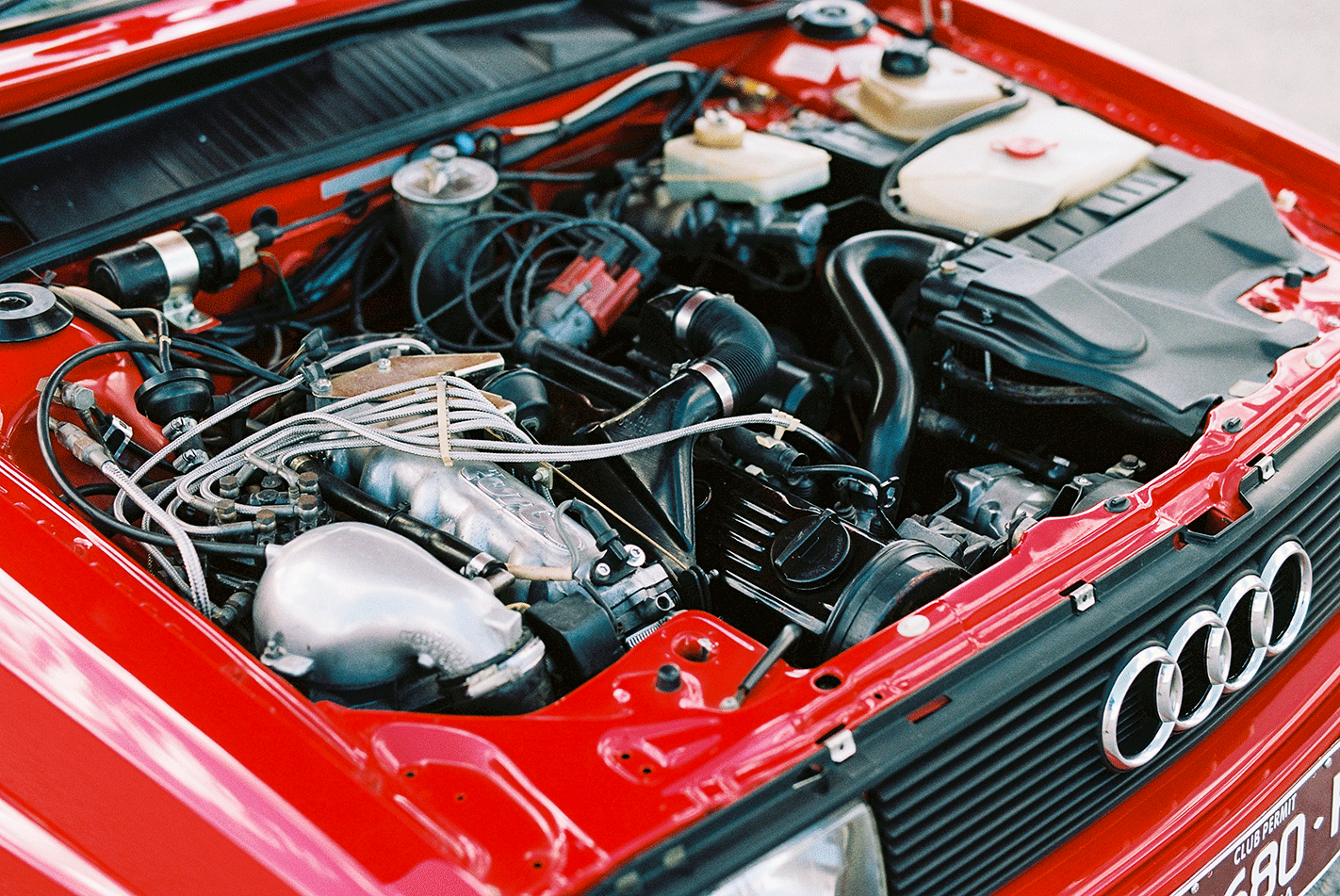
When the Quattro first appeared on the stand at the 1980 Geneva Show, father of the concept and chief engineer Jorg Bensinger wasn’t entirely happy. He was proud of the mechanicals that underpinned the car but was less enamoured by the styling. “I would like a sportier body on the car,” he said to Gavin Green in a 1981 Wheels interview, “but we just didn’t have enough time or money to develop the car and design a new body for it as well. That’s why we chose the new Audi Coupe body,” he said and then presaged the flagship R8 by saying, “in future there will be a Ferrari-like body on the Quattro.”
Bensinger knew that Audi’s monopoly on all-wheel drive wouldn’t last. “Four-wheel drive will become popular in the upper end of the luxury market, and also in the upper end of the sports car market,” he said. “Mercedes already has four-wheel-drive sedans under test.” He also touched on the tie-up with Porsche that would ultimately result in the 964 Carrera 4. “Porsche wants to improve the 911 and this is an obvious way of going about it,” he noted.
While Quattro made more sense for Audi – a company previously married to a longitudinal front-engined architecture – than Porsche, whose 911 rarely wanted for traction, there were other aspects beyond drive going to each contact patch and the rugged five-pot turbocharged engine that distinguished the ur-Quattro. There’s a studied genius to the Quattro’s elastokinematics, in the tuning of its anti-roll bars and the axial, conical and radial deformations of its bushings. The spring and damper rates allow the car to travel quickly across poor surfaces, and excellent aerodynamic stability only adds to the car’s bulletproof feel.
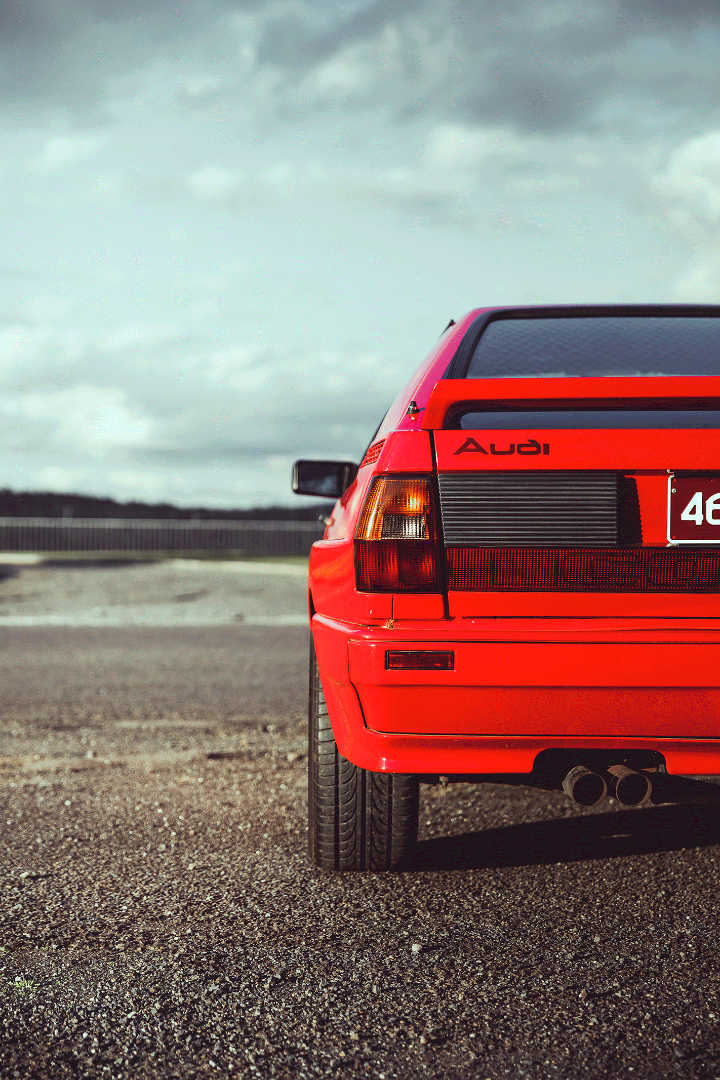
It got better with every passing generation and the late 20v models, with their higher compression engines, aluminium suspension and bigger rear brakes, are particularly sought after. At the other end of the spectrum are the 1980-82 ‘square headlamp’ version of the WR that existed just before Audi introduced the divisive green digital dashboard. These early cars have their own equally enthusiastic following.
All of which might just make the 10v MB models the best buy of the lot. They combine the Torsen-diff and better brakes with a more affordable asking price than the 20v run-out editions. No version of the Quattro was ever officially imported to Australia, and it’s not on the SEVS list for authorised import, so it’s hard to pick and choose as they remain relatively rare. As a result, prices vary quite markedly. Around $45,000 will net you a project, with a tidy MB getting towards $80,000 and a low-mileage, concours-spec RR well into six figures.
Buying and running a Quattro can be an involving process. Despite the five-cylinder engine being a fundamentally strong powerplant, there’s a lot to keep on top of. That’s not helped by the fact that official parts support from Audi has been patchy at best. Running a Quattro means digging around for new old-stock spares, relying on enterprising third parties and locating a sympathetic independent garage.
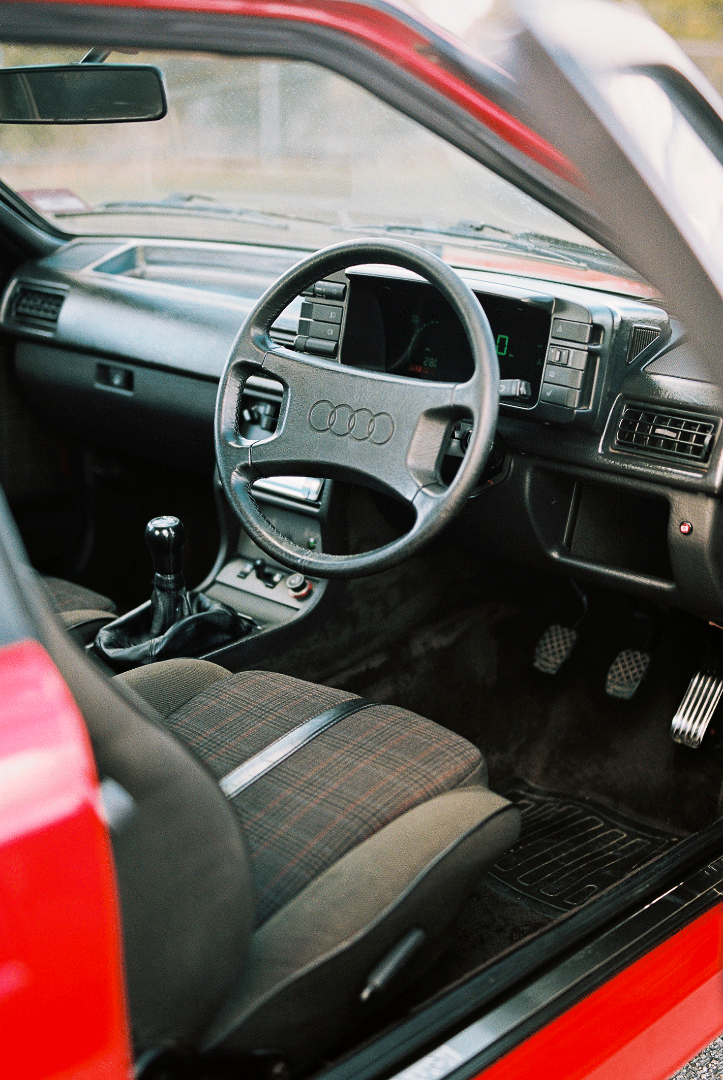
Some have complained that Quattros feel ‘old’ to drive. They shouldn’t. Although the steering is, by nature, slow, the chassis should feel tight. So check for front-end crash damage, and if the car feels loose on its feet, it’s likely that bushes and balljoints will need to be refreshed, new dampers fitted and the nine CV joints stripped and rebuilt. Alignment is also a key thing to address, so check the tyres for signs of uneven wear and return to factory camber and toe settings. Also ask the seller about timing belt renewals. Audi quotes a figure of 70,000km, but having had my MB Quattro lunch its engine due to a failed timing belt, I’d be inclined to limit that to 50K.
Check the seat backs for cracking and creaking as welds can fail. Have a fiddle with the central locking, the electric windows, the sunroof and the boot catch for niggles. Check for damp carpet in the boot (a notorious rust trap) and all four corners of the interior.
If it’s a late WR that you’re looking at, hold the ‘Check’ button in and the synthesised voice should work (how Eighties) when the ignition is clicked on. The fuel pump should not run until the engine is turned over. All Quattro five-cylinder engines have a degree of tappet rattle when you fire up the car but any prolonged ticking will probably be a notable Achilles heel of this car – a cracked exhaust manifold.
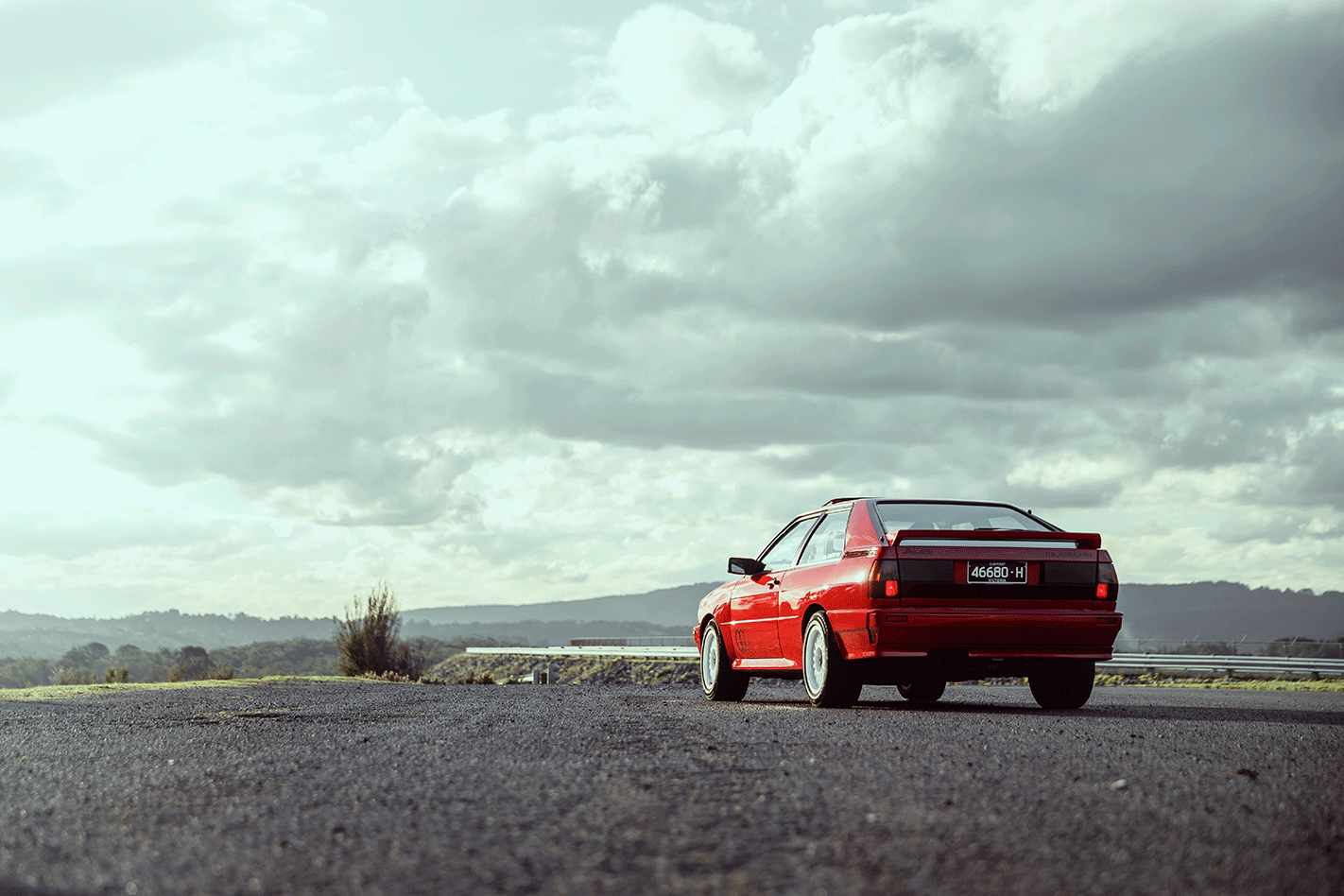
Another issue that frequently afflicts the MB and RR generations is a faulty brake hydraulic accumulator. Sited between the master cylinder and the bulkhead is the brake pressure servo. Sitting diagonally atop this is the low- pressure warning switch. Pull the connector off this and connect a multimeter to the switch. Pump the brake pedal hard. If the switch fails after three or fewer applications, the accumulator needs to be changed.
So while the Audi Quattro is anything but a low-involvement ownership exercise, the ends justify the effort. The Quattro will be remembered as one of a handful of 20th-century cars that markedly changed the automotive landscape. Ford Model T, Volkswagen Beetle, Issigonis’ Mini, Lamborghini Miura, Toyota Prius, Audi Quattro. It’s a select list.
Go back and read Peter Robinson’s story to better understand the impact this car, originally planned for just 400 homologation units, had on Audi’s global sales. It changed Audi and it changed the world. But, as Bensinger freely admits, Ingolstadt got there first, with other rivals working on all-wheel-drive mechanicals. Be that as it may. Every legend needs a little luck along the way.
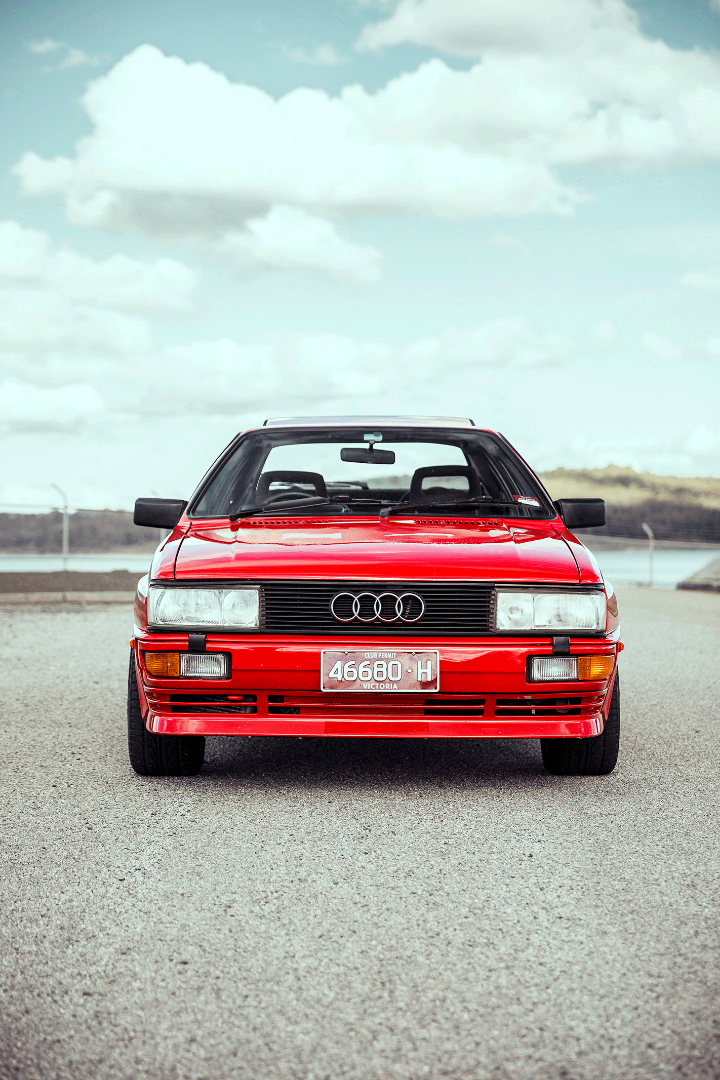
1985 –Quattro debuts dual clutch transmission in competition
317 – The wheelbase chop (in mm) to create the Sport Quattro
23 – WRC victories
11,452 – production run between 1980-1991
38 – Years since a female last won in the WRC (Michele Mouton, Brazil)
MOUTON on THE MOUNTAIN
Michele Mouton blitzed Pikes Peak in 1984. When she arrived in Colorado in ’85, the officials set out to make life hard for her. They pinged her for a 5mph practice speed infraction, so she had to have her Quattro pushed to the line and start the engine when the lights went green. The result? She took the last four corners flat and set a course record.


